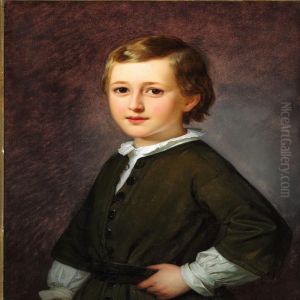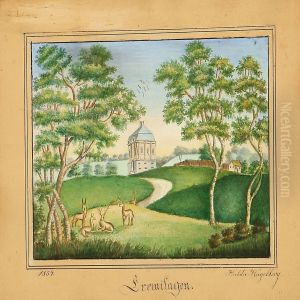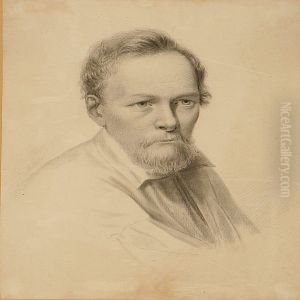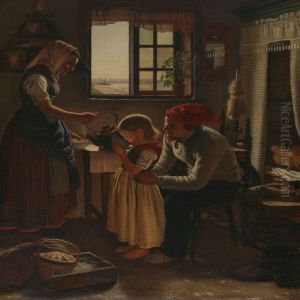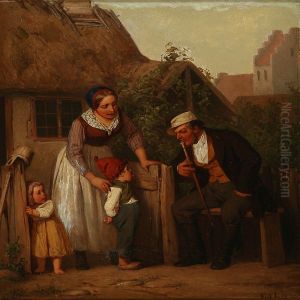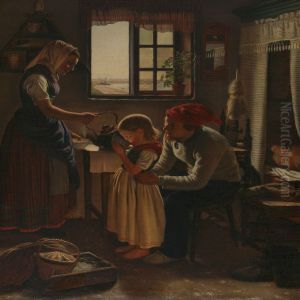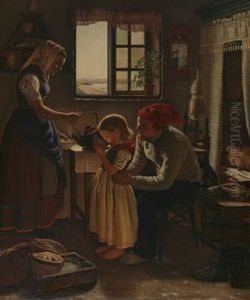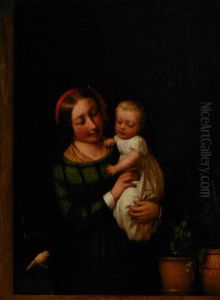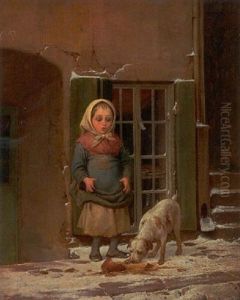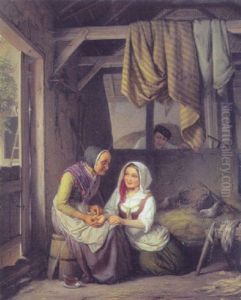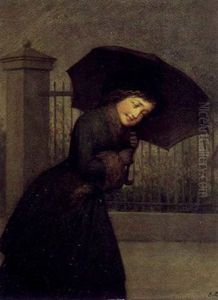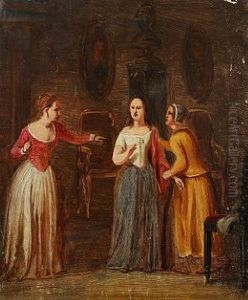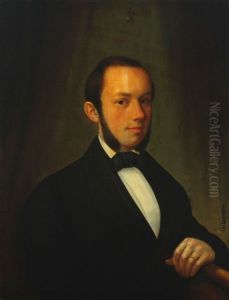Edvard Lehmann Paintings
Edvard Lehmann was a Danish painter born on May 14, 1815, in Copenhagen, Denmark. He was associated with the Danish Golden Age, a period of extraordinary creative production in Denmark in the early to mid-19th century. Lehmann studied at the Royal Danish Academy of Fine Arts and was influenced by the teachings of Christoffer Wilhelm Eckersberg, known as the father of Danish painting, who emphasized the importance of painting from nature and life.
After completing his studies, Lehmann traveled extensively throughout Europe, a common practice for artists of the time to gain inspiration and experience. He visited countries like Italy and France, where he was exposed to the works of classical masters and contemporary artists. This exposure helped him develop his style, which combined the classical discipline he learned at the Academy with the more modern European artistic movements of the time.
Lehmann's work includes historical and biblical scenes, genre paintings, and portraits. He was particularly known for his historical paintings, where he often focused on grand narratives with a moral or didactic purpose. His attention to detail and his ability to convey emotion through his characters were notable aspects of his work. He received considerable recognition in Denmark and was commissioned to create works for various institutions.
Apart from painting, Lehmann was also a respected teacher at the Royal Danish Academy of Fine Arts and influenced a new generation of Danish artists. He played a significant role in the cultural life of Denmark and contributed to the development of Danish art in the 19th century.
Edvard Lehmann passed away on September 16, 1892, in Frederiksberg, Denmark. Although not as widely known as some of his contemporaries, his works remain an important part of the Danish artistic heritage and can be seen in museums and galleries in Denmark and beyond.


